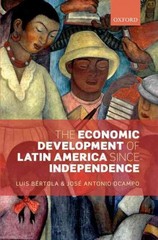Part 2. Matching: Match the Key terms in Column "A" with the definitions in Column "B" by writing the block (upper) case letter of yourchoice under column "A" and match the definitions in column "B" with the meanings or examples or real world applications orfacts orformulas in column "C" by writing the small (lower) case letter of your choice under column "B".
Please note: I only need answers for question #2, 4 & 6 thank you.
Chapter 4. Prices: Free, Controlled, & Relative: Pre-Class & In-Class Activities Packet Name/I.D. Number: Section: Date: Part 2. Matching: Match the Key terms in Column "A" with the definitions in Column "B" by writing the block (upper) case letter of your choice under column "A" and match the definitions in column "B" with the meanings or examples or real world applications or facts or formulas in column "C" by writing the small (lower) case letter of your choice under column "B" Column "A" Column "B" Column "C" 1. Price Ceiling A. The price of a good in a. It is the result of inefficiency in terms of resource use. The kind of "hidden" or "disguised" welfare loss to society as a whole when the market generate an output level that couldn't otherwise money terms have been produced under the conditions of efficiency. Example: Monopolies create welfare loss to society by producing less output and charging higher prices (Tprofits) than perfectly competitive B. A sale whereby one good markets do. The minimum legal price which may be above the equilibrium or market clearing price that the 2. Tie-in Sale can be purchased only if b. buyer is asked to pay by law. The intention of this kind of price control by the government is to another good is also benefit the sellers by guarantying a "reserve" (minimum) price for their product so that they can make money & stay in business regardless of the free market outcome. However, this situation may create purchased. surplus in the market by encouraging (inducing) sellers to produce and supply more and discouraging C. The price of a good in buyers due to inflated( high) price. The government sometimes deals with this problem by absorbing 3. Price Floor the surplus product from the market. Depending on the nature of the product, the government may buy terms of another good. t from the producers and give it to a developing country in the form of a humanitarian assistance or in the form of "tied-aid" or "soft loan" (tied aid is restricted to be taken in-kind only & "no cash D. A government-mandated assistance" and a soft loan is a loan with "irresistible deals", such as a loan with very low or no interest rate at all that can be repaid over long period of time, say 25 years) minimum price below which The "sticker price" or the "price tag" that we see in stores for goods. 4. Deadweight legal trades cannot be The maximum legal price which may be less than the equilibrium or market clearing price that a seller is allowed to charge by law. The intention of such kind of price control is to protect the Loss made. consumers from a high market determined price or from price gauging by some unscrupulous sellers. However, this kind of intervention by the government may lead to shortages by stimulating more E. A government-mandated demand and by discouraging the suppliers (due to lower prices). This situation may lead to a 5. Absolute maximum price above which flourishing "black" or "parallel" market in which goods and services are traded at a higher price than (Money) mandated by the government. The shortage created should be dealt by the government that created Price legal trades cannot be the problem in the first place by using a certain type of rationing device as discussed in chapter 1. e . The price of one good expressed in terms of the number of equivalent value units of the other made. good. For example, one USB Flash or Thumb drive is equal to (exchanged for ) ten discs. f. F. The loss to society of not A situation whereby stores force their customers to buy a product that they don't intend to buy 6. Relative because the sale of the good they want ("tying" product) is conditional upon the purchase of another Price producing the competitive, or slow moving or less demanded ("tied" product) in the store. Example: Cable companies usually lump in channels with high demand with channels with low demand just to boost their line up (number of supply-and-demand- channels for certain amount of cable fees). This kind of practice may violate antitrust laws in the U.S., determined, level of output. according to the Federal Trade Commission (FTC.gov), if the company has monopoly power in the primary (Tving) product 3







